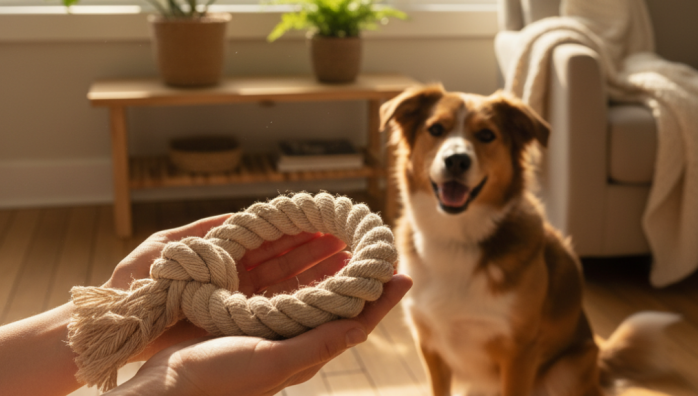Choosing Sustainable Pet Products
by admin in Pet Care Basics 20 - Last Update November 21, 2025

I remember looking at our trash can one week and feeling a real sense of unease. It was overflowing with empty plastic dog food bags, shredded plastic toys, and those non-recyclable puppy pad liners. I love my pets more than anything, but I couldn\'t ignore the environmental \'pawprint\' we were creating. It felt overwhelming at first, but I decided to make a change, one product at a time. My goal wasn\'t perfection, but progress in making our pet parenting journey a little kinder to the planet.
What \'sustainable\' really means for pet products
The term \'eco-friendly\' gets thrown around a lot, so I had to do some digging to understand what I should actually be looking for. For me, it boils down to a few key areas. It\'s about the materials used (are they renewable like hemp or bamboo, or made from recycled content?), the durability of the product (a toy that lasts a year is better than twelve that last a month), and the end-of-life plan (is the packaging and product itself recyclable or compostable?). It\'s a mindset shift from disposable to durable.
My experience finding better toys and gear
Moving beyond cheap plastic toys
Honestly, my first step was the toy box. I was tired of finding sharp, broken plastic bits around the house. I started investing in toys made from natural rubber and tough, recycled fabrics. Yes, they sometimes cost a little more upfront, but they\'ve outlasted their cheaper counterparts ten times over. I learned that having three or four high-quality, safe, and sustainable toys was far better than having twenty flimsy ones that end up in a landfill.
Beds, collars, and leashes
When it was time for a new dog bed, I actively looked for one made with a recycled filler (often from plastic bottles) and an organic cotton or hemp cover. The most sustainable feature? A washable cover. Being able to keep the bed clean and fresh for years has prevented me from needing to replace the whole thing. The same logic applied to collars and leashes—I now look for brands using recycled webbing or other durable, eco-conscious materials.
Greener choices for food and waste
Tackling food packaging
Pet food is a tricky one. While the food inside is the priority, the packaging creates a lot of waste. I\'ve started favoring brands that use recyclable paper bags or participate in take-back programs. Buying the largest bag possible also significantly reduces packaging waste over time. Of course, any change in diet is a big deal, so this is just my approach, and I always recommend chatting with your vet before switching your pet\'s food for any reason.
The inescapable poop problem
Let\'s be real: pet waste happens. For years, I used standard plastic bags without a second thought. My biggest and easiest swap was to certified compostable poop bags. It\'s crucial to look for bags that are certified \'compostable\' (usually meeting ASTM D6400 or EN 13432 standards), not just \'biodegradable,\' as the terms mean very different things. It’s a small daily action that makes a big collective difference.
It\'s about small steps, not giant leaps
My journey into sustainable pet parenting has been a slow and steady process of learning and swapping. It\'s not about throwing everything out and starting over. It\'s about making a more conscious choice the next time you need to buy a toy, a bag of food, or a collar. Every small decision adds up to a healthier planet for us and our beloved animal companions.














